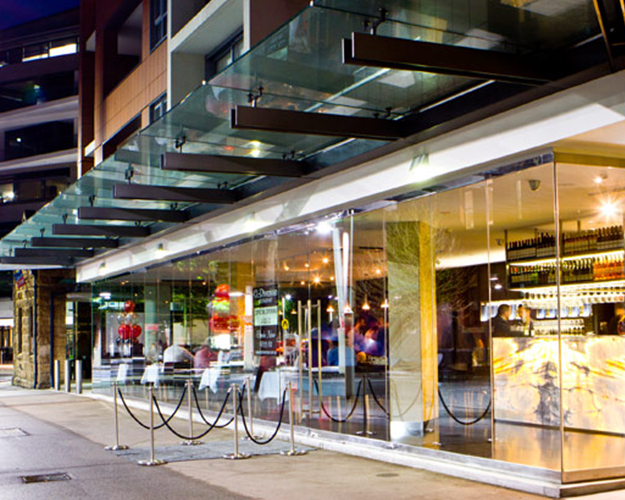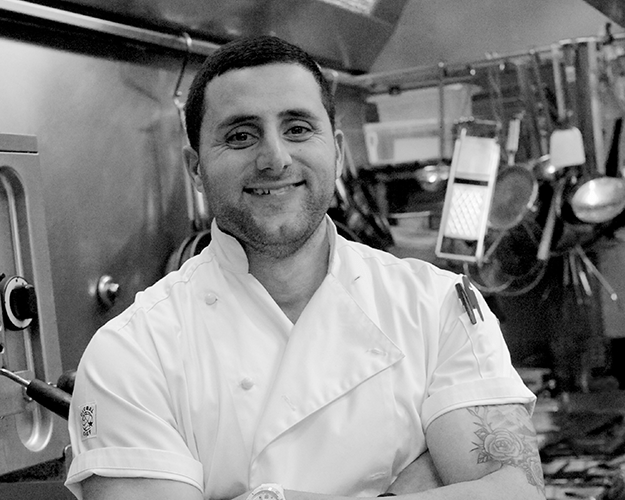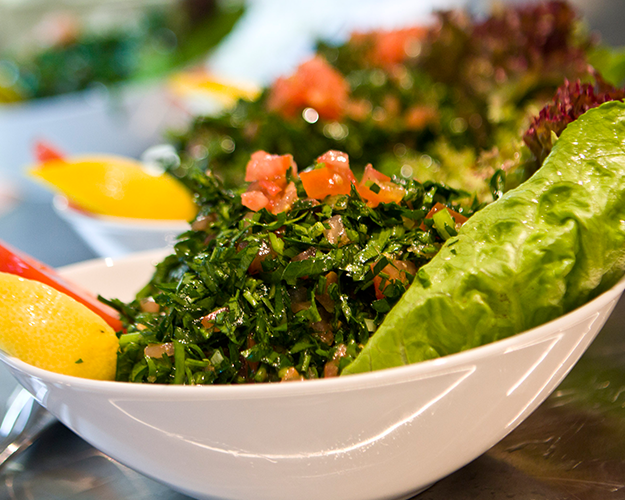Experience the evocative flavours of Lebanon without stepping a foot into Beirut.
Who can pass up the smoky flavours of a good baba ganouje. The decadence of a buttery sambousik. The char of grilled meat accompanied by a gorgeous red and a dash of creamy tahina.
Sitting in one of the many sidewalk cafés in Beirut, inhaling the air tinged by the essence of burnt orange smoke provided by an army of billowing nargila, is the stuff culinary dreams are made of.
However, not many of us can travel to the wondrous world of Lebanon at the drop of a hat. Still, we can all bring a little Beirut into our respective homes with a fabulous Lebanese-inspired dish.
The Food of our Ancestors
Matthew El-Bayeh is the Head Chef of Sydney’s El-Phoenician Restaurant. El-Phoenician, described as an “institution that sets the standard for fine Middle Eastern and Mediterranean dining” by Sydney Morning Herald’s Good Living, mixes traditional cooking techniques with modern culinary experiences.
“Our recipes are a nod to the Phoenicians that would sail around the world in search of the finest spices and luxury items,” says Matthew. “The flavours are passed on from generation to generation until they reach our diners.”
The Lebanese way
Apart from the ample amount of food most would witness when attending a Lebanese-inspired event, according to Matthew, there are five key ingredients that make a dish Lebanese.
“The first is the freshness of produce,” he says. “Always opt for the freshest ingredients that add an element of zest to your dish.”
The second is spice.
“Don’t scrimp on the abundance of flavours that a good Lebanese dish needs to incorporate,” he says. “You’ll often experience complexed and layered spice elements in our food.”
The third is texture.
“A Lebanese banquet will take you on a journey through smooth, creamy, sharp and crunchy,” he says.
The fourth, and most important according to Matthew, is a meal’s shareability.
“Lebanese food isn’t meant to be served to a single diner.” he says. “It has a way of bringing people together, to share the offering and indulge in the experience.”
Serve at home
Matthew advises the best way to create a Lebanese dish is by making sure you tick off each element of texture and flavour within each dish.
“It should also be pretty on the eye,” he says. “The best way to assure that is to incorporate as much colour from fresh produce as possible.”
For those wishing to emulate the taste of Lebanon at home, here’s a recipe that’ll make you feel your backyard has suddenly transformed into Beirut.
Tabouli
20 grams of cracked wheat
5 medium tomatoes, diced
5 cups of finely chopped flat-leaf parsley
1/4 cup of finely chopped spring onions
75mls of lemon juice
100 mls of olive oil
1/2 tsp ground allspice
1/2 tsp of salt
Method
Combine all the ingredients and mix with a dressing made from olive oil. salt, allspice and lemon juice. Refrigerate for 10 minutes before serving.
Here’s a walk-through video to help perfect your tabouli technique:









